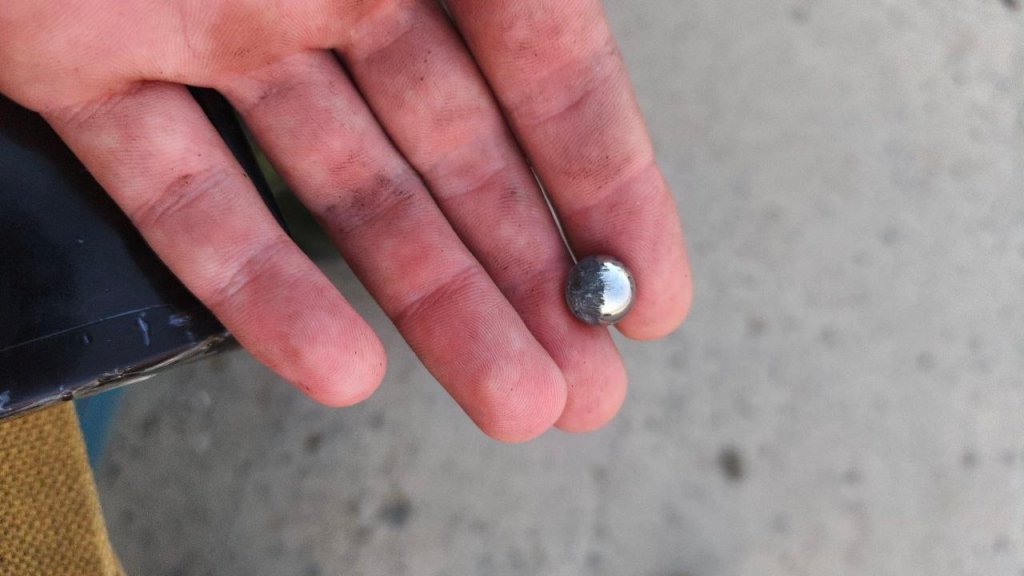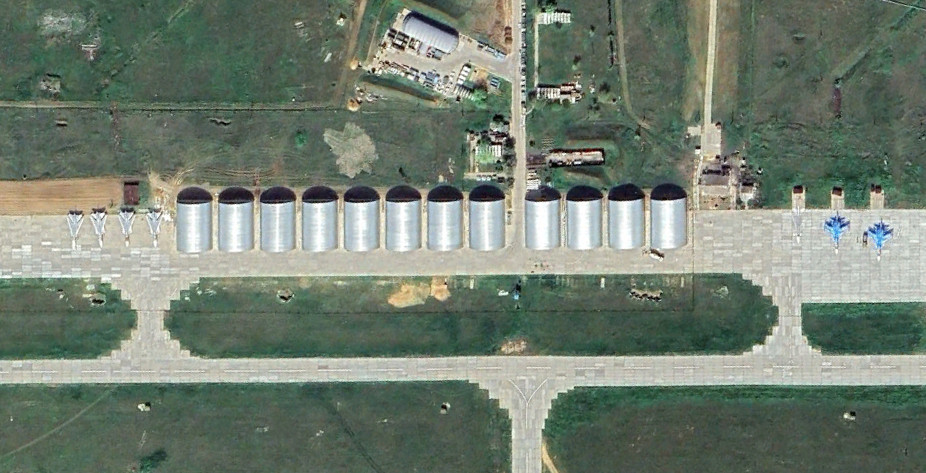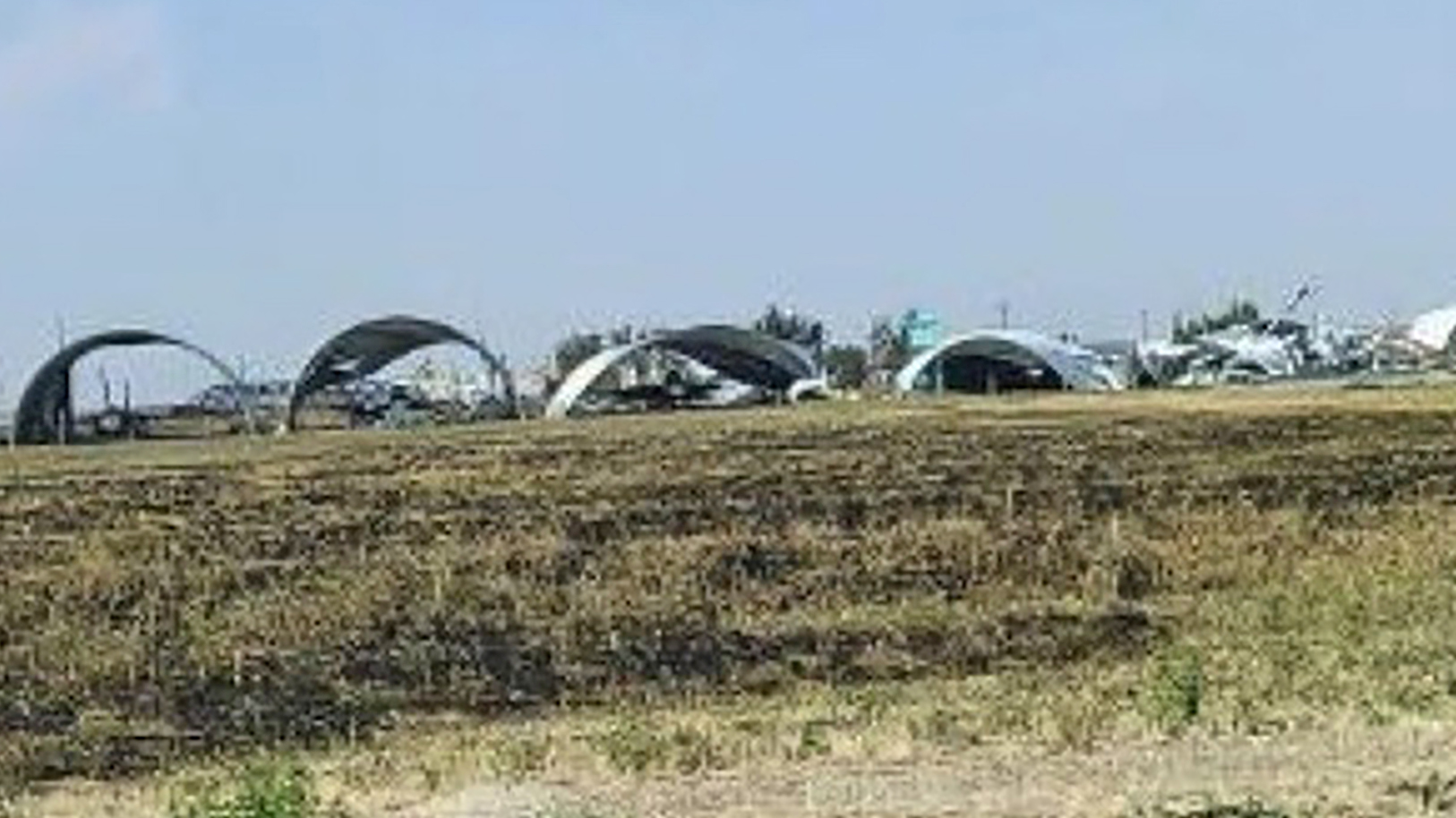Satellite images and post-strike photos emerging in the aftermath of a Ukrainian drone attack on Russia’s Marinovka Air Base show extensive damage to metal aircraft shelters on the flightline and to other parts of the base.
Several of the hangars struck contained aircraft that were very likely damaged, possibly severely, in the attack, which was claimed by Ukraine’s State Security Service (SBU). The base is located in Russia’s Volgograd region, about 300 miles from the current front lines.
One image posted on Telegram and enlarged by Radio Free Europe/Radio Liberty journalist Mark Krutov offered a better view of the aircraft caught in the hangars.
A closeup image of one of those hangars shows scores of small holes that indicate Ukraine used munitions containing ball bearings or some other fragmentation devices on the drones to maximize the damage they cause. This is a common practice across the Ukrainian battlefield and beyond.

A photo also emerged claiming to show shrapnel collected from the airfield. While The War Zone cannot independently verify its authenticity, the Russian Aerospace Forces-connected Fighterbomber Telegram channel complained bitterly about someone capturing images of the attack aftermath.
“I wonder from the photo from Marinovka – was it just a moron taking the picture?” Fighterbomber queried. “A traitor for money? Or a poor guy who was ordered to urgently provide a photo report of the damage and he habitually sent it via WhatsApp to his superior?”

Other parts of the base were hit as well, as open-source investigator MT Anderson (@MT_Anderson) noted on Twitter. He also compared images before and after the attack showing the extent of the damage.
“Still analyzing but given the interest, I shared what I thought were the areas that got hit,” he wrote. “Once again, less about airframes. Good amount of destruction around the hangars and just north of there.”
A closer analysis by Anderson of imagery taken Aug. 19 shows what appears to have been more than a dozen Su-24M Fencer swing-wing attack jets and more than a dozen Su-34 Fullback strike aircraft at the base. It is unknown how many of those jets were there at the time of the attack.
Earlier Thursday, video emerged in the immediate aftermath of the strike, showing a large swath of the base covered in thick smoke. Someone on the video is heard bemoaning the situation.
“It’s still fucking flying,” he said, according to a translation provided by Anton Gershchenko, a former Ukrainian government advisor and frequent social media commentator. “It’s still fucking around. They’ve completely destroyed it. The airfield is fucked up. This is a serious tragedy, guys. This is very serious stuff…”
The SBU said it launched the attack, along with Ukrainian special operations forces, to destroy guided bombs stored there among other targets, according to Ukrainian Pravda (UP).
The SBU “is highly precise in hitting airfields used for attacks against Ukraine,” the publication added, quoting a source within the security agency. “Each strike diminishes Russian air superiority and significantly restricts their aircraft capabilities.”
Local residents described the airfield “as resembling scenes from an apocalypse film following the Ukrainian drone attack,” UP reported. “Warehouses containing guided aerial bombs, ammunition and fuel and lubricants were exploding at the airfield.”
As we noted in a story in June about the need for protective shelters for aircraft in the age of drones, Google Earth highlighted 12 aircraft shelters on the Marinovka flight line. Construction began in November of last year. This is a relatively rare feature for Russian airbases. You can see those shelters in the image below.

The War Zone examined why these shelters were needed as part of a deeper dive into whether the U.S. should build hardened shelters for its combat aircraft. From our story at the time:
“The specific impetus for the erection of the shelters at Marinovka is not known, but Russian forces did claim to have downed a presumed Ukrainian drone over Volograd in September 2023. Ukraine’s widespread and daily employment of weaponized uncrewed aerial systems, including long-range kamikaze types and ones launched much closer to their targets, poses a real threat, including to aircraft exposed on aprons at air bases deep inside Russia.”
That is exactly what happened at Marinovka. We also wondered how the shelters would hold up in an attack. The satellite images show that these kinds of structures only provide partial protection from long-range drone strikes, something Fighterbomber decried after the attack.
“By the way, light aircraft shelters have undergone a baptism of fire,” Fighterbomber wrote. “Those that were given as a gift.”
“Well, a miracle did not happen,” Fighterbomber complained. “Let’s say so. We need reinforced concrete structures. But this does not mean that light shelters are not needed. They are needed everywhere where it is not possible to build reinforced concrete structures. And as I said, they should be reinforced with gabions or concrete blocks along the perimeter.”
Still, these shelters appear to have provided protection against the brunt of some of the warheads and stopped shrapnel from flying even farther and damaging other airframes. They would likely be more effective against localized attacks using drones that are piloted by personnel nearby and drop bomblets and other explosive devices. In addition, much of their utility comes from complicating the enemy’s ability to confidently target aircraft on the ground, as they may be concealed under some but not others. And thin corrugated metal is not going to stop a blast fragmentation warhead under any circumstances. If you want that kind of protection you need a more hardened aircraft shelter than what Russia installed at this base, and they are surely aware of that.
Metal shelters may not provide miracles, but given the extent of the damage, the attack would have been more devastating to Russian aviation without them.
Contact the author: howard@thewarzone.com
